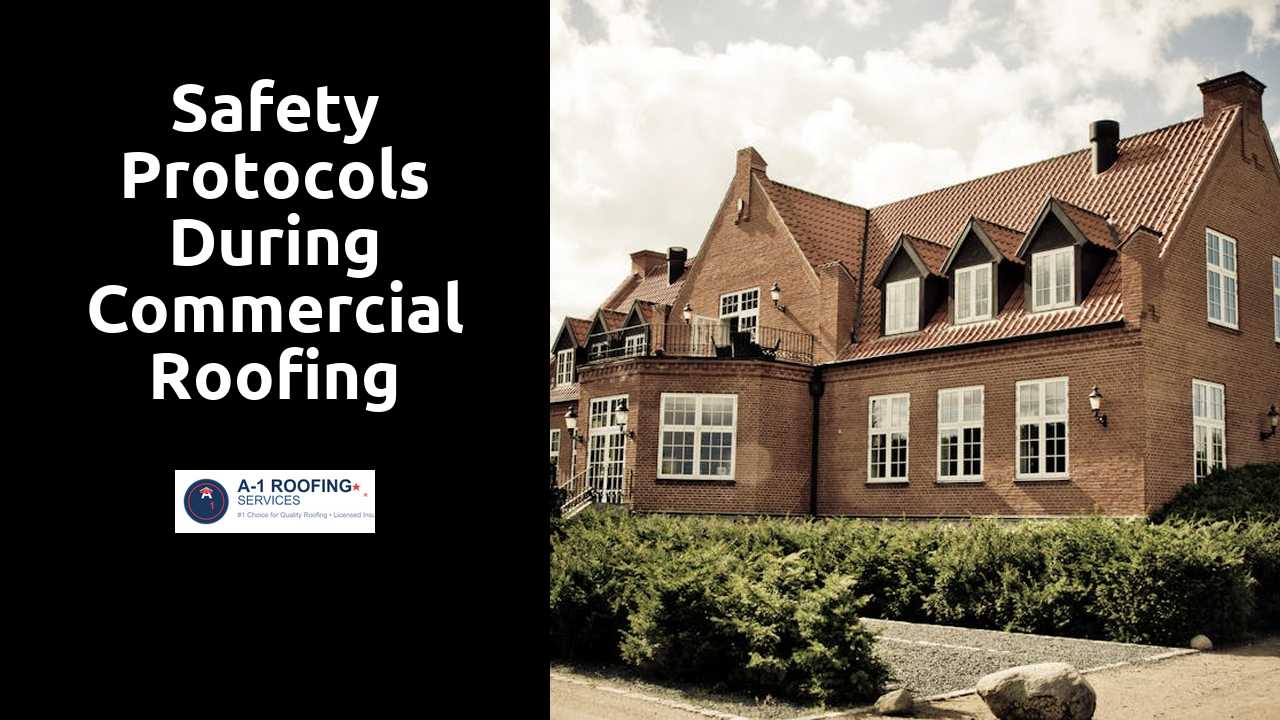
Safety Protocols During Commercial Roofing Installation
Table Of Contents
Handling Roofing Materials Safely
The safe handling of roofing materials is crucial in ensuring a secure work environment. Workers should always wear appropriate personal protective equipment (PPE) such as gloves, hard hats, and steel-toed boots. Proper lifting techniques must be employed to prevent strain injuries. When transporting materials, it is essential to keep pathways clear and avoid carrying excessively heavy loads alone, which could lead to accidents.
Additionally, securing materials properly is vital to prevent slips and falls. Items should be stacked neatly and labeled if necessary. When using equipment like lifts or cranes, operators should be trained and certified to minimize risks during loading and unloading. Regular inspections of materials for damage or defects will further enhance safety during handling.
Check out this site for more information.
Avoiding Injuries During Material Transport
Transferring roofing materials requires attention to detail to prevent injuries among workers. Employees should always use proper lifting techniques, like bending at the knees instead of the waist, to avoid back strain. Making use of equipment such as dollies, hoists, or forklift trucks can significantly reduce the physical burden on workers and lower the risk of accidents. Teamwork is crucial for handling heavier materials. Assigning roles can help ensure a coordinated approach, reducing the chances of dropping or mishandling materials.
Clear pathways must be maintained in the work area to facilitate safe transport. Any obstacles should be removed before starting work, allowing for unobstructed movement. Workers deserve the right footwear with good traction to navigate various surfaces safely. Additionally, ensuring that all materials are securely stacked and properly covered can prevent slips and falls. Establishing a protocol for transporting materials will contribute to a safer work environment, ultimately minimizing the risk of injuries during the installation process.
Electrical Safety Measures
Electricity poses significant risks during commercial roofing installations. Workers should be aware of overhead power lines before beginning any task. Maintaining a safe distance from these lines is crucial to avoid accidental contact. Additionally, equipment must be inspected regularly to ensure it is free from frayed wires and other damage. Proper grounding of tools and using portable generator systems designed for outdoor use can further mitigate risks associated with electricity.
Having a designated electrician on-site is beneficial for addressing any electrical issues that arise. This designated person should be trained to identify potential hazards and implement safety measures promptly. All workers must receive training on recognizing electrical hazards and understanding the protocols for responding to electrical emergencies. Personal protective equipment, such as insulating gloves and boots, should be worn to provide additional protection against electrical shocks. Regular safety meetings can reinforce these practices and keep everyone informed about new safety protocols.
Preventing Electrical Hazards on the Job
Electrical hazards pose significant risks in commercial roofing projects, necessitating vigilant safety measures. It's crucial to inspect all electrical tools and equipment before use. Ensuring that cords are free of frays or damage minimizes the risk of shock. Ground fault circuit interrupters (GFCI) should be used to protect workers from electrical shock, especially in wet conditions. Proper training on the use of electrical tools further enhances safety and reduces accidents on site.
In addition to equipment checks, maintaining a safe distance from overhead power lines is essential. Workers should always be aware of their surroundings and recognize the location of electrical sources. Marking such areas clearly and utilizing caution signs can alert crew members to potential dangers. Regular safety meetings to discuss electrical safety protocols can reinforce these practices, fostering an environment focused on risk prevention and awareness.
Emergency Preparedness and Response
Effective emergency preparedness is crucial for any roofing project. Establishing a comprehensive response plan can greatly reduce the risk of injury and property damage. This plan should detail the roles and responsibilities of each team member during an emergency. Regular drills can help ensure that everyone understands their specific duties, which can enhance responsiveness in real situations. Having readily accessible emergency kits, first aid supplies, and communication devices can further support safety measures on-site.
Training workers to recognize potential hazards is essential for accident prevention. Workers should be familiar with the types of emergencies that could arise, such as severe weather, falls, or equipment malfunctions. A clear communication strategy must be in place, ensuring team members can promptly report incidents. Conducting frequent safety meetings to discuss potential risks and responses can also solidify the team's readiness to handle unforeseen situations effectively.
Creating a Plan for On-Site Emergencies
An effective emergency response plan is essential for any commercial roofing project. This plan should outline specific procedures for various scenarios such as medical emergencies, severe weather events, or fires. Team members must be familiar with their roles and responsibilities within the plan. Conducting regular drills ensures that everyone understands how to react quickly and efficiently when an emergency arises.
In addition to procedures, having accessible emergency equipment, such as first aid kits and fire extinguishers, is crucial. Clearly marked escape routes and easily identifiable emergency contact numbers should be posted prominently around the worksite. Regularly reviewing the plan with the crew enhances overall preparedness and fosters a culture of safety. Training sessions can provide team members with the knowledge needed to handle emergencies appropriately and confidently.
Related Links
Timeline for Completing a Commercial Roofing Installation ProjectHow to Choose the Right Contractor for Commercial Roofing Installation